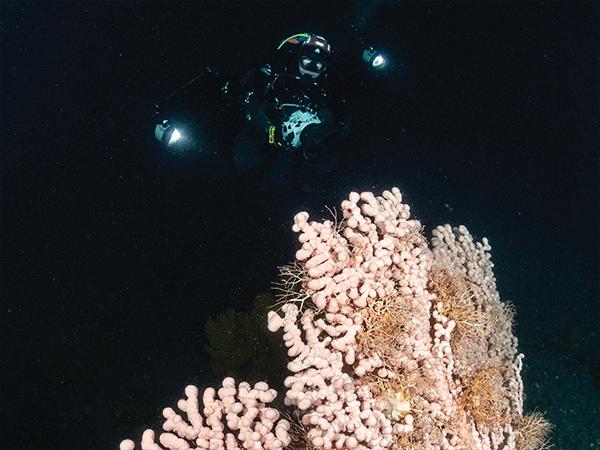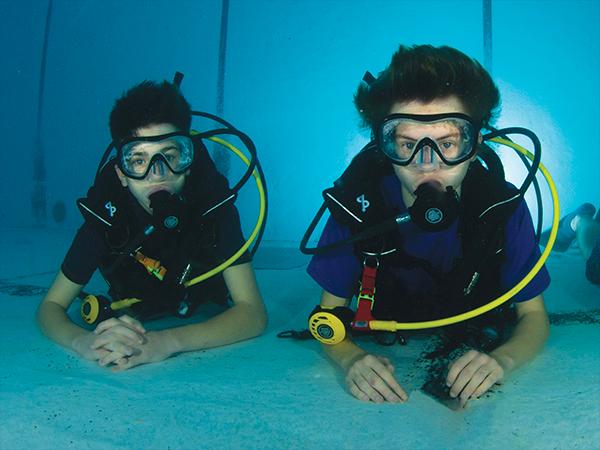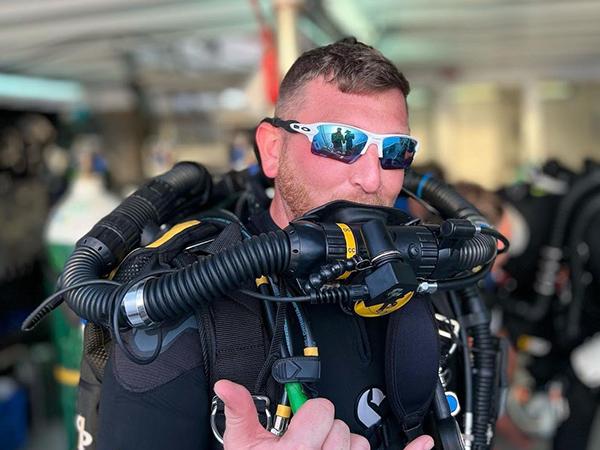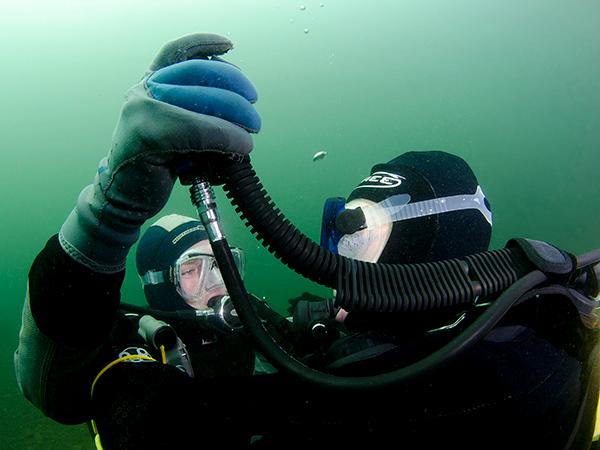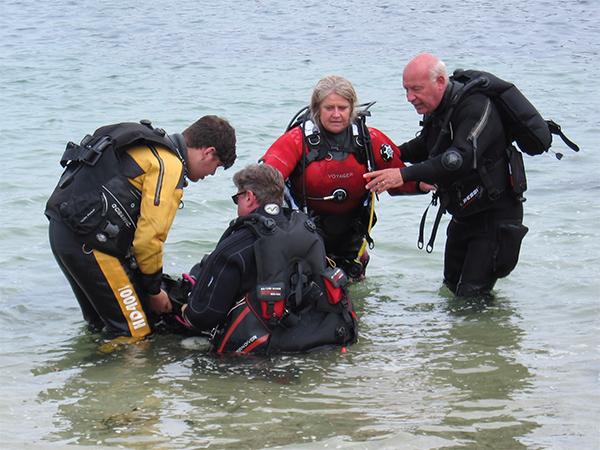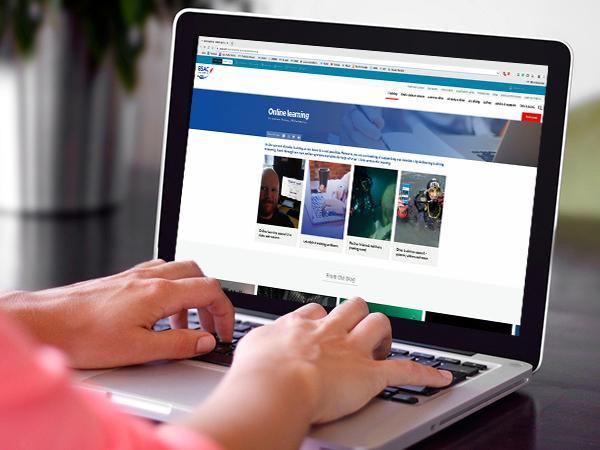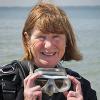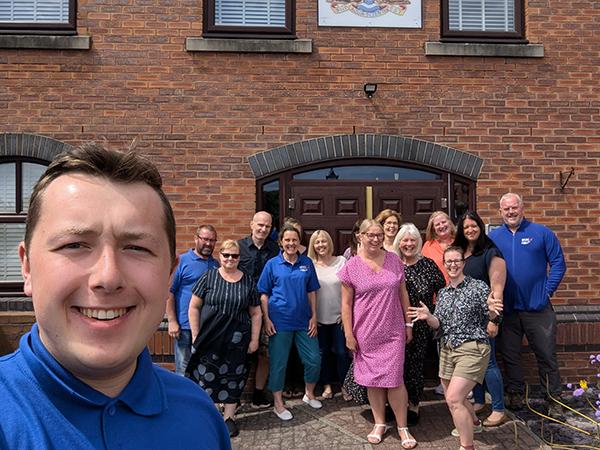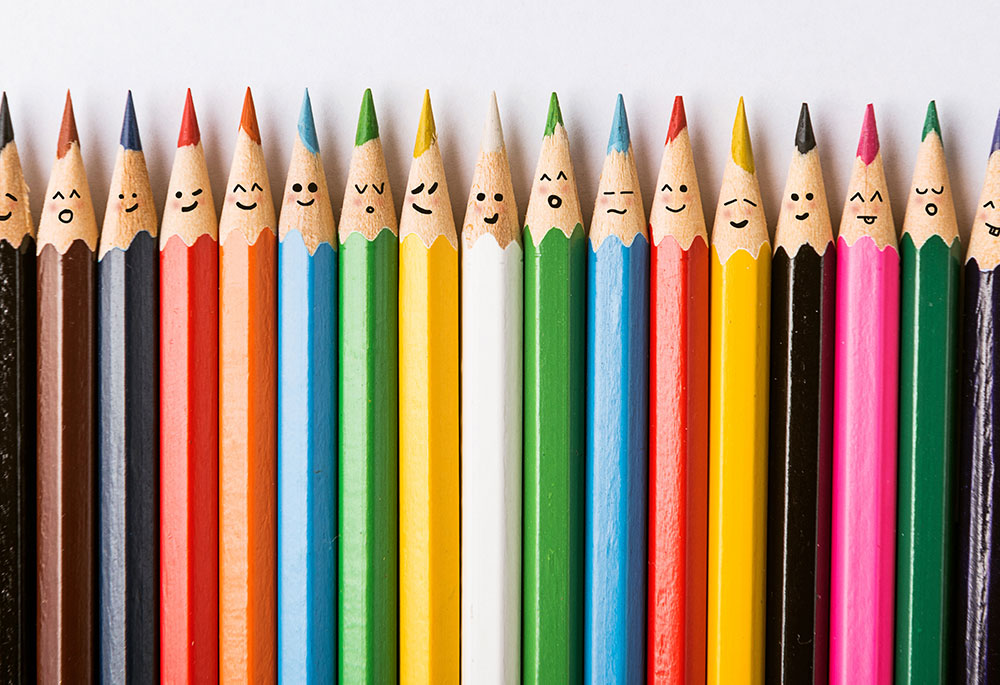
Welcome to this module on equality, diversity and inclusion. We are going to look at language to use and why when we are talking to a non-familiar audience, so this is anyone who is not one of our friends or family. Equality, diversity and inclusion is about making sure that no one feels left out.
Module contents
This module gives an awareness of equality, diversity and inclusion.
This module will cover the following topics:
- Introduction
- Legal considerations
- Gender
- Disabilities
- Ethnicity
- Summary
Introduction
As part of the BSAC strategy we are looking to move towards becoming more inclusive and diverse in our community. BSAC has seen a year on year decline in membership for several years and, looking at the profile of our members / community we need to be more inclusive in both our outlook and teaching in order to broaden the diversity of our community... as it is currently worded it sounds like we are only doing this to get more members and its not about the people. We need to be able to be welcoming to all and understanding of individuals situations. To do this we need to be able to make individuals feel physically safe and able to speak up. The first step in this process is the language we speak. We as a club need to bring our language up to date and in line with current thinking. Over the course of this module, we will be taking you through this process and giving you the background and knowledge you need as a member to be able to put this into place yourself.
Equality is about making sure everyone has an equal opportunity, diversity is about celebrating the difference in individuals and inclusion is about making sure no one feels left out. Wherever possible we should be looking to refer to individuals rather than groups. Most importantly as long as we allow ourselves to be educated and learn from others, we can’t go far wrong. Please note this course is in line with the Equality Act 2010.
Communication is vital to allow us to share information
We will be discussing protected characteristics and terminology used to refer to people that could be seen as derogatory or exclusionary in order for you as a member to build and nurture a diverse and safe space within our community.
Language has always been one of the most powerful tools that we have to share knowledge normally, especially in pre-Covid-19 world our body language, our tone of voice and the signals that we physically give as we’re speaking actually enhanced the words and the language that we use.
However, in the current world that we live in with the Covid-19 virus, which will be around for a while, we have moved to a much more online and virtual world for communication. As such, we lose the body language, some of the tone of voice and some other signals, so the words we use have become much more important.
Therefore, we need to be much more aware of the terminology we use around diverse groups, as well as why particular phrases can be seen as exclusionary. This course will focus on language and is in line with the Equality Act 2010.

Language
How we use language
When we actually go in and look at language itself, we need to consider how we use it and what terminology we are using. Language, as mentioned, is ever changing and the words along with standard terminology needs to be kept up to date, appropriate and inclusive. A good baseline for this is to remember not to talk down to anyone, don’t patronise and don’t make assumptions.
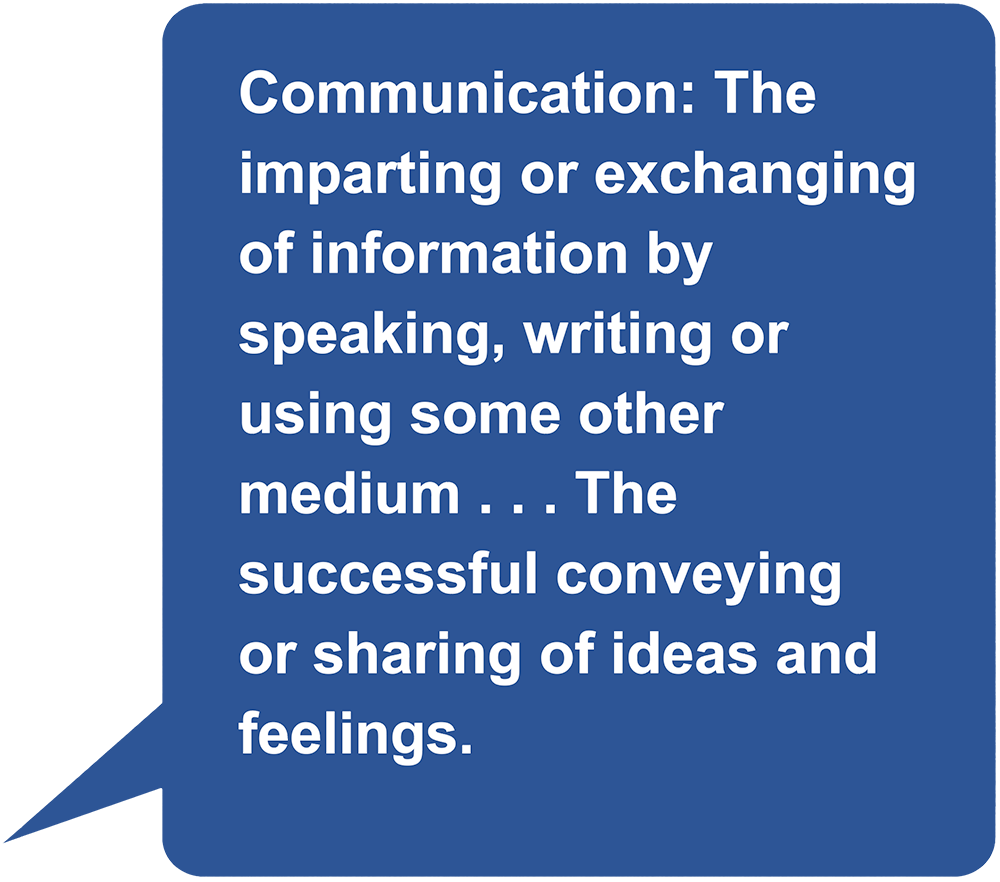
The biggest challenges and changes over the last few years have come with respect to language around equality, diversity and inclusion. As mentioned, language is ever changing and evolving, as such we need to ensure that it is both respectful and fit for purpose in order to allow us to move towards a more open, inclusive, respectful and welcoming environment for all. This in turn will also then keep us in line with both the Sport England guidance and the Equality Act 2010.

Legal considerations
We’re now going to look at some legal considerations and these are in line with the Equality Act 2010.

The following are classed as protected characteristics and it is against the law to discriminate against someone because of these.
Discrimination is the unjust or prejudicial treatment of different categories of people.
- Age
We should note that this does not include excluding someone from diving because they are below the allowed age recommended by BSAC. - Disability
As a reminder we do have the Diving for All course (DfA), which gives you more information around adapting situations to be more inclusive. - Gender reassignment
- Marriage and civil partnership
- Pregnancy and maternity
Ideally, pregnant women should not be diving, however, you should not ask nor imply someone is pregnant. - Race
- Religion or beliefs
- Sex
- Sexual orientation
Statistics–UK (2019)
Population of UK: approximately 66.8 million individuals
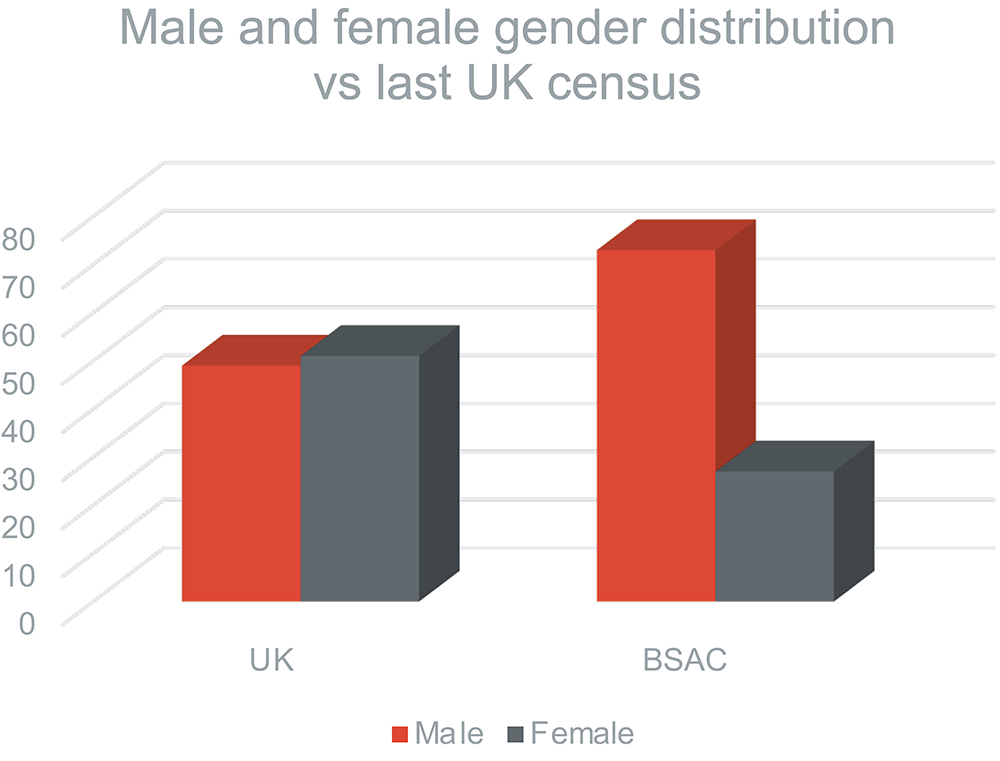
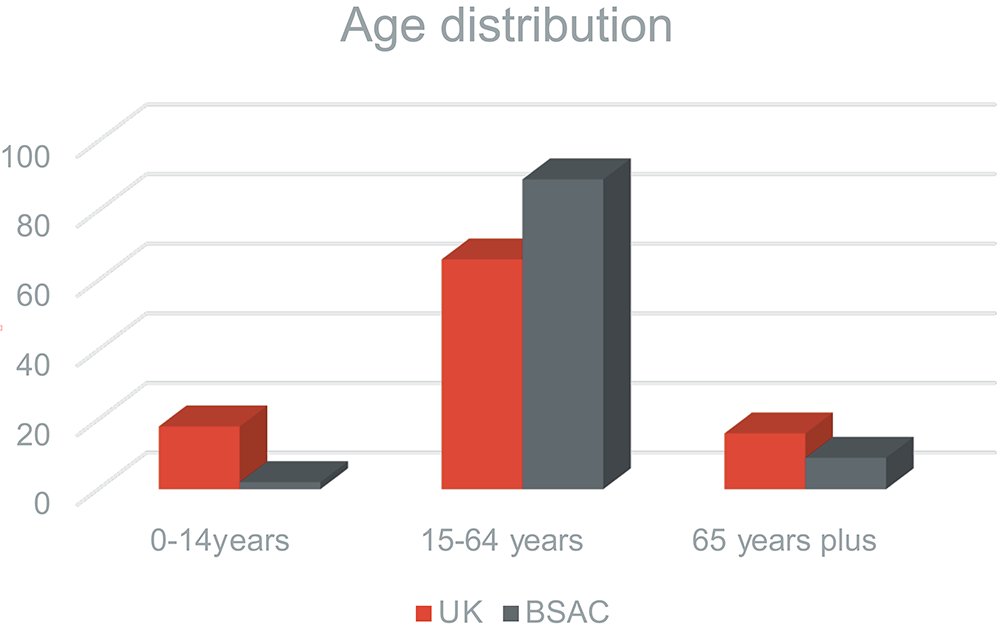
13% individuals are regarded as ethnic minorities
Not tracked by BSAC
22% of individuals reported a disability
Not tracked by BSAC
Gender
When we define inclusive language, we aim for communication that avoids using words, expressions or assumptions that would unnecessarily exclude people. For the past few decades, there’s been an increased awareness of language that excludes on the basis of gender.
Gender is no longer simple, there’s more awareness of a spectrum of gender identities and gender expression, and as such the language we use needs to be in line with the latest understanding.
Whereas past generations may have been taught to use “he” as the default for a person, the latter half of the 20th century saw people looking for alternatives to “he” and “she” or to re-write to avoid identifying gender at all.
Gender is made up of four factors
- How we identify as a person
- Those who we find attractive
- The sexual characteristics we were assigned at birth
- How we express ourselves
These four factors build our gender identity.
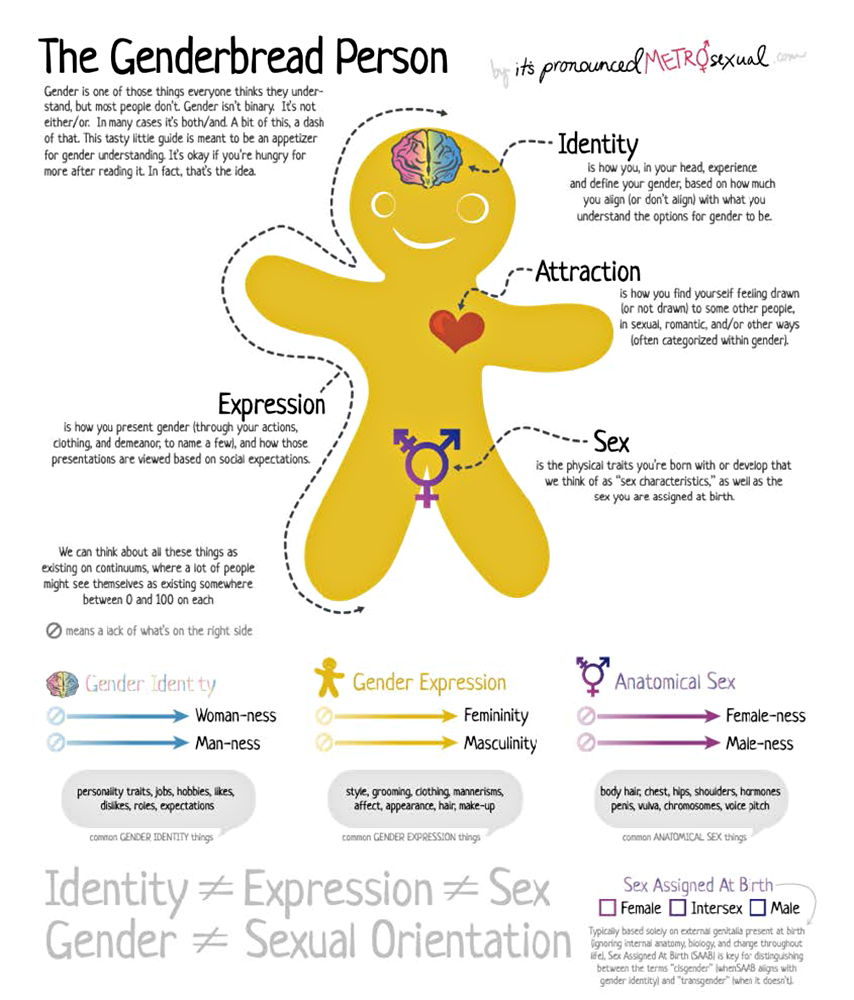
Gender language
Terms of use
- Gender neutral terms
Folk
People
Spouses/Partners
Divers
Snorkelers
Teammates
Colleagues
Trainees
Friends
Everyone
Members
Community
When you first meet someone, you can ask them for their preferred pronouns (he/him, she/her, they/them), but if you don’t know, you should use they/them/theirs. In order to help normalise preferred pronouns, you can add yours to your email signature.
There are very few times when you would be required to identify someone’s gender, however a coastguard or paramedic may ask this in order to assess certain injuries. This would be based on physical descriptors and should be treated sensitively if the victim is trans or gender non-conforming.
| Terms to be avoided | Reasoning | Alternative terms |
| Girls, ladies, love, darling, dear, hen, pet, sweetheart, duck, chick, lass, and any other gendered pet names | When adult women are referred to as girls or ladies, this can be seen as a belittling or derogatory term | Ideally gender neutral terms – folk, people, divers, snorkelers, teammates, colleagues, trainees, friends, members, community, everyone |
| Ladies and gentlemen | This is an outdated term of address that excludes people who are gender non-conforming (non-binary, genderfluid, bigender) | Try ‘good evening and welcome everyone’ or any other gender-neutral terms of address |
| Guys | Often used as slang for a mixed gender group of people but also can also assume male gender identity | Use gender neutral terms – folk, people, divers, snorkelers, teammates, colleagues, trainees, etc |
| Wife/Wives/Husband(s) | These are non-inclusive terms | Spouses/Partners |
| Normal (when describing individuals) | This is a non-inclusive term that can be seen as stigmatising | Typical, common |
| She/hers/her | These gender-specific pronouns are not gender neutral and unless you are aware of an individuals’ preferred pronouns, it is better not to guess or to prefer the use of one over the other | Them/their/they/theirs |
The social model of disability
A definition of inclusive language, though, goes beyond merely gender. With inclusive language, we aim for communication that includes people, regardless of gender, language, culture, religion, race, ability, family structure, marital status, sexuality, origin and so on.
We should aim to utilise the ‘social model of disability’ rather than the ‘medical model of disability’. In the past the traditional medical model has been used, putting the onus of ‘disability’ on the individual, essentially implying that they are unable to access opportunities as a result of their disability. The social model (pictured) flips this idea by explaining that it is actually societal barriers that restrict people, as you can see the majority of the barriers they face are those put in place by other people. We do not want to be part of the problem so let us be part of the solution.
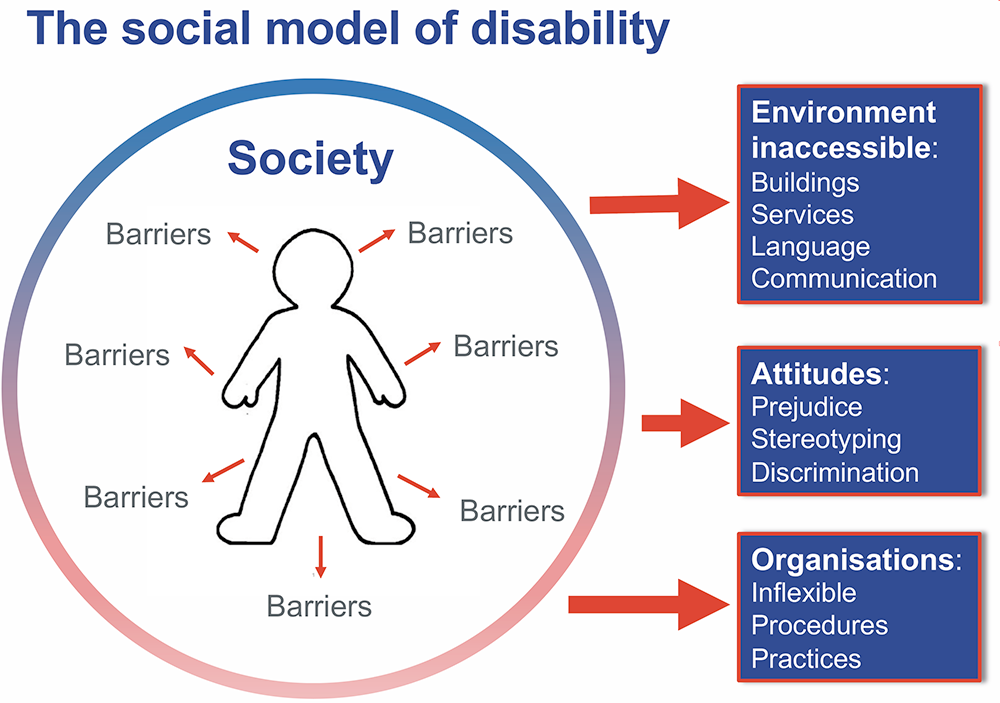
Disability language
Points to think about
Remember that not all disabilities are visible. The disability does not define the person – it is something they live with. The language we use needs to be in line with this understanding. For example. If a person has a physical disability, then they are a person living with a disability.
If a person has a mental health challenge or disability, they do not legally need to disclose it. They can just say they are living with a disability and inform you of their access needs.
| Terms to be avoided | Reasoning | Alternative terms |
| Mentally handicapped | This is seen as a derogatory term | Use polite language or if referring to a person with an impairment then define it, e.g. a person with learning difficulties |
| People with disabilities | In general, it is better to focus on the barriers faced than a disability, i.e. the person is not the problem, the barriers to their involvement are | People living with a disability |
| Normal | This is a non-inclusive term that can be seen as stigmatising | Typical, common |

Ethnicity
Consider if you ever need to describe someone by their ethnic background, the chances are the answer is no
Considering diving, do we ever really need to describe someone by their ethnic background? We don’t! Therefore, we refer to the collective neutral terms we have already suggested. These can be used interchangeably whenever you’re talking about anybody either as an individual or as a group.
- Use neutral terms
Folk
People
Spouses/Partners
Divers
Snorkelers
Teammates
Colleagues
Trainees
Friends
Everyone
Members
Community
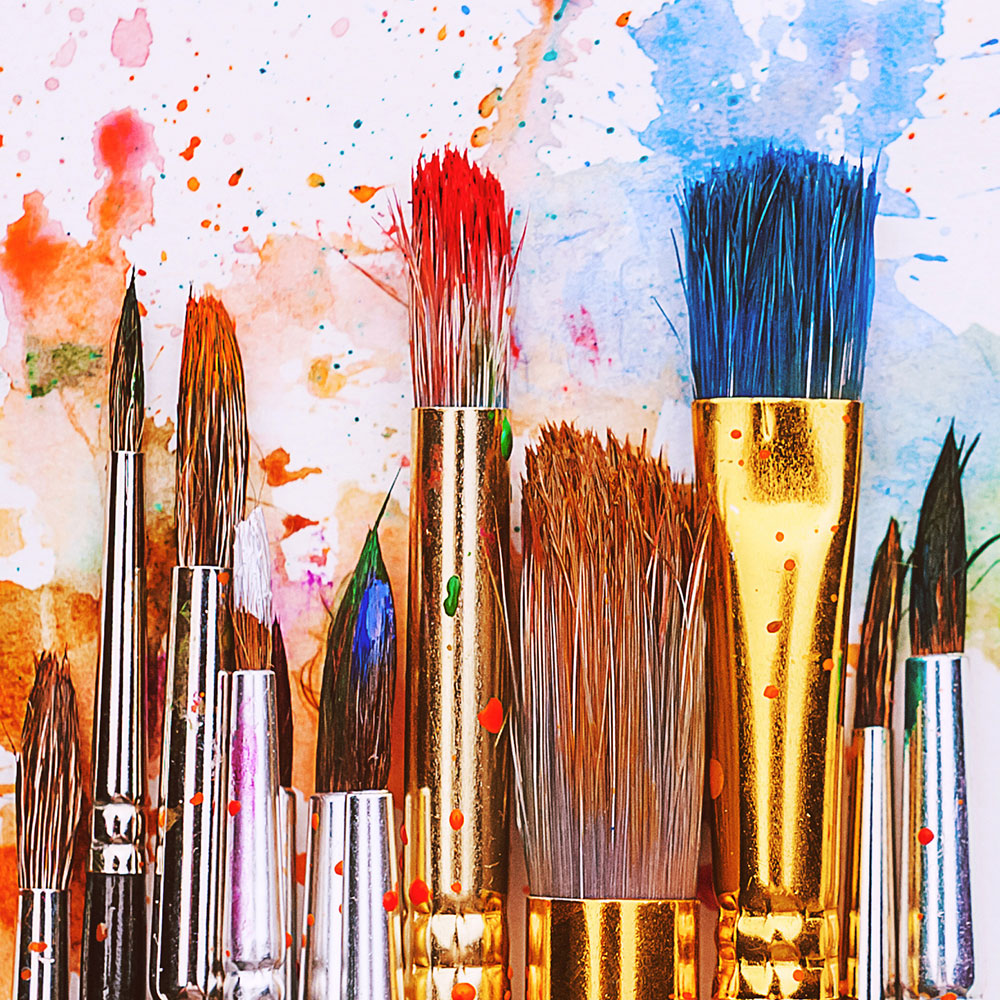
In conclusion
Best practice
So, this brings us to the end of the module in equality diversity and inclusion. This is a very simple best practice guide which we can live by. Treat people appropriately to their individual needs and with dignity and respect and if you have any doubt in the words to use choose neutral terminology.

Summary
So we looked at
- Introduction
- Legal considerations
- Gender
- Disabilities
- Ethnicity
- Summary
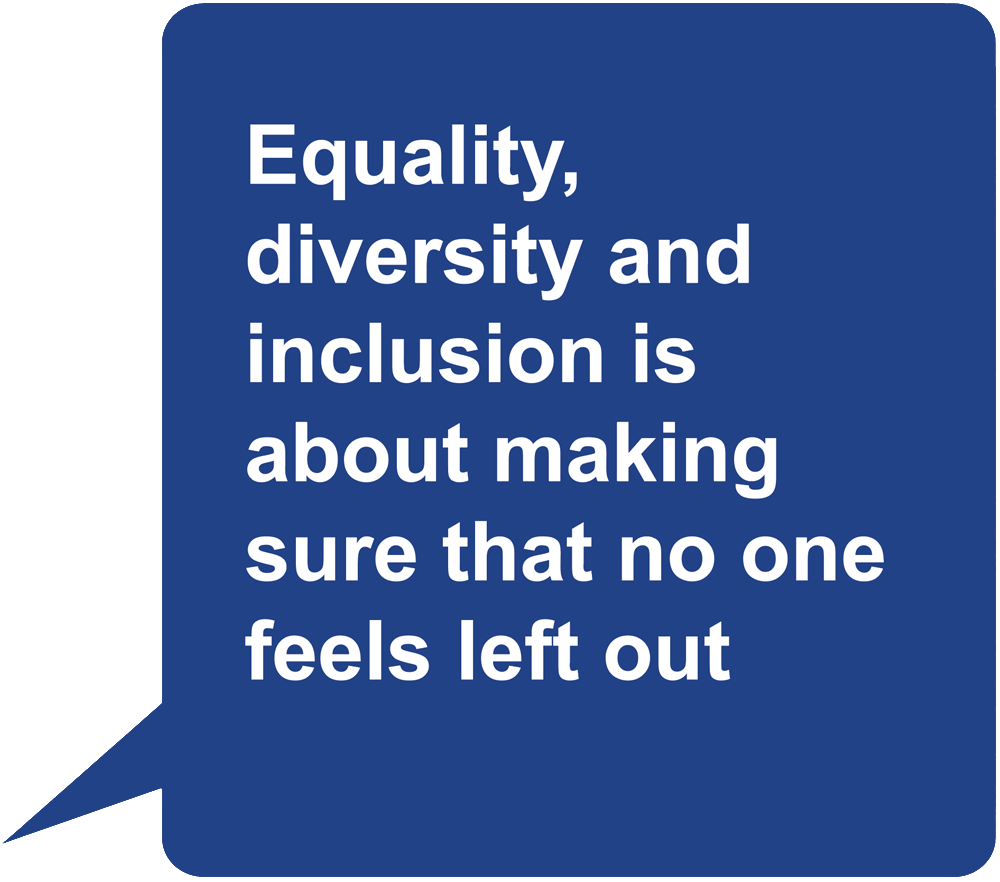
If you are confident, you can now take the real theory module exam. Remember you will need 4 out 5 answers to pass. If you succeed you will see the module signed off in your ‘MyBSAC’ area on the BSAC website.
Exam time
Welcome to your end of module exam.
- You have a maximum of 5 minutes to do your multiple choice exam.
- To pass the exam you must get 4 out of 5 questions correct.
Good luck

